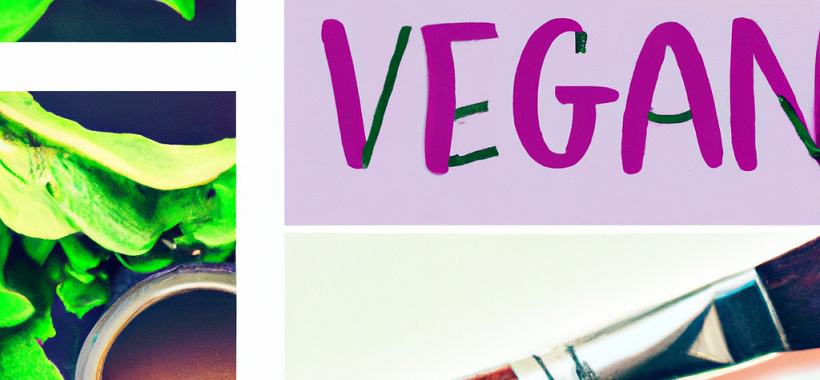EU regulatory news
Urgent Update on Benzotriazole: Regulatory Action Proposed
Germany’s evaluation of Benzotriazole under the CoRAP has revealed severe environmental hazards, including its status as an endocrine disruptor and its persistence and mobility. These findings have led to recommendations for:
- EU-level regulatory action.
- Classification as a Substance of Very High Concern (SVHC).
- Potential restrictions to minimize environmental release.
This evaluation highlights the necessity for swift regulatory measures to address the environmental impact of Benzotriazole.
New EU Product Safety Recall Notice Template Introduced
The European Commission has announced a standardized “recall notice” template under the new General Product Safety Regulation. This template is designed to streamline the process for businesses issuing recall notices and enhance consumer awareness and understanding of product recalls. Key features of the template include sections for the brand and product name, product image, identification numbers, sales information, identified hazards, consumer actions, available remedies, and contact points. This template will become mandatory for all product safety recalls in Europe once the General Product Safety Regulation is in effect, ensuring a uniform approach across the EU.
Octocrylene restriction update
The French regulatory agency Anses is reviewing the potential environmental hazards of octocrylene, a UV filter used in cosmetics. This review concerns the substance’s impact on aquatic life and possibly contaminating groundwater, affecting drinking water quality. Responsible parties were invited to provide input to the Regulatory Management Options Analysis (RMOA) until January 10, 2024. The European Chemicals Agency (ECHA) has postponed the deadline for the restriction dossier from October 4, 2024, to January 10, 2025, due to timing adjustments.
Launch of ECHA CHEM: a new chemicals information tool
ECHA has launched ECHA CHEM, a comprehensive tool to consolidate chemical information. This new platform integrates data from industry registration dossiers and EU regulatory processes. Initially, ECHA CHEM provides access to information from more than 100,000 REACH registration dossiers. There are plans to enhance the tool later this year with updated CLH inventory and regulatory lists. ECHA CHEM is accessible online and joins the chemical search platform launched in 2016, which hosts data on more than 360,000 substances.
European Commission Endorses New Urban Wastewater Directive
The European Commission supports a new Directive to improve protection against urban wastewater discharges to achieve cleaner waters across Europe. This involves better removal of pollutants, systematic monitoring of microplastics, surveillance of PFASs, and sanitary controls of wastewater. Extended producer responsibility (EPR) is a crucial element that introduced the “polluter pays” principle in the water sector, significantly affecting the pharmaceutical and cosmetics industries.
The Directive is pending adoption by the European Parliament and the Council, with implementation scheduled for 2026.
EU proposals to reclassify cosmetic ingredients
France and Austria propose to reclassify two cosmetic ingredients for health reasons:
- 4-hydroxy-4-methylpentan-2-one (diacetone alcohol): currently used as a fragrance and solvent, it is not regulated by the EU Cosmetics Regulation but is listed for causing severe eye irritation. France proposes to add a classification for possible harm to the unborn child.
- 2-amino-2-methylpropanol (Aminomethyl Propanol): Used as a buffering agent, subject to the conditions of the EU Cosmetics Regulation to avoid nitrosation phenomena and classified as irritating to skin and eyes and harmful to aquatic life. Austria suggests classifications for severe skin burns, eye damage, possible harm to fertility and the unborn child, and potential organ damage from prolonged exposure.
If these reclassifications are finalized, these substances could be banned in European cosmetic products unless exempted explicitly following SCCS evaluation.
EU proposes stricter classifications for cosmetic ingredients.
Belgium has proposed new, stricter hazard classifications for three chemical ingredients commonly used in cosmetics, following EU regulations:
- Nitromethane is an anti-corrosion agent limited to 0.3% in finished products. Proposed classifications include severe eye irritation and potential harm to the unborn child.
- Nitroethane: Currently unregulated solvent, with proposed classifications indicating risks of severe skin burns, eye injury, potential fertility damage, and organ damage from prolonged exposure.
- 1-Nitropropane: Another solvent facing similar proposed classifications as nitroethane, including carcinogenicity and reproductive toxicity.
These proposals, open for consultation until April 19, 2024, could lead to classifying these substances as CMRs (carcinogenic, mutagenic, or reproductive toxins), potentially banning their use in cosmetics in Europe unless exemptions are granted following SCCS consultation.
EU Releases Crucial Microplastics Restriction Guidance for Cosmetic Industry
The new EU guidance on the restriction of microplastics for the cosmetics industry was published on February 14. It clarifies the application of the Annex XVII restriction on synthetic polymer microparticles (SPM). This document provides the definition of SPM, the exemptions, and the biodegradability and solubility criteria for determining compliance. It also provides a decision-making framework to help companies assess whether their polymers fall within the restriction and detail specific labeling and information obligations to ensure environmental protection. This guidance is intended to facilitate the industry’s adaptation to the regulation, emphasizing collaboration between raw material suppliers and product manufacturers.
For more details, visit the official document: https://cosmeticseurope.eu/files/8317/0799/4021/CE_EFfCI_Guidance_on_Annex_XVII_Restriction_of_SPM_-_version_1_for_release.pdf
EU Sets Strict Guidelines for Environmental Claims and Sustainability Labels
The European Union has announced measures against greenwashing, banning unproven or false environmental claims. Claims will be required to be assessed by accredited verifiers within 30 days, with penalties of up to 4% of annual turnover for non-compliance. In addition, using sustainability labels with public authorities’ certification will be strictly established and restricted. These actions ensure that consumers receive clear and truthful information about products. The vote on the draft is scheduled for March 2024.
Cosmetic Industry Alert: Adapting to 2025 Substance Bans
Regarding the 21st Amendment to EU Regulation 2024/197, from September 1, 2025, new classifications and restrictions will apply to substances in cosmetics, banning Dimethylthiothylamine and Trimethylbenzoyl Diphenylphosphine Oxide due to their CMR classification. For guidance on these changes and to simplify your adaptation, please get in touch with our team of experts.
EU Sets New Boundaries for Fluorinated Gas Usage from 2024
On February 20, 2024, the European Commission published a new regulation on fluorinated greenhouse gases to prevent emissions and introduce specific restrictions. From January 1, 2025, the marketing of certain products, including cosmetics, containing these gases will be banned, with a transitional period until January 1, 2026. The regulation also outlines criteria for granting production rights and requires a license to import and export the relevant products. This is an essential step towards reducing the environmental impact of these potent greenhouse gases.
EU Cosmetics Industry Alert: 2024 Borderline Manual Update
The latest revision of the European Commission’s Limits Manual, dated February 20, 2024, introduces key product classifications within the boundaries of cosmetics regulation. Glues and adhesives for false nails and other decorative purposes are highlighted, along with magnetic eyeliners for false eyelashes. This handbook is essential for companies to correctly classify their products as cosmetics within the EU regulations, emphasizing a case-by-case assessment approach. Expert consultation is advised for those navigating these complex classifications to ensure compliance and consumer confidence. You can stay ahead of the curve with CE.way Regulatory Consultants Ltd for personalized advice on these updates.
USA Regulatory news
The Countdown Begins: New York to Phase Out PFAS by 2027
New York announces a significant policy, AB 9005, to ban PFASs in cosmetics and personal care products by January 1, 2027, addressing health and environmental concerns linked to these substances. This move aligns with efforts towards safer beauty standards, while inevitable “unavoidable” uses of PFASs are exempted, pending a comprehensive evaluation by December 29, 2025. Stay up to date on this fundamental change in the cosmetics industry.
Canada Regulatory news
Health Canada Implements Ban on Cosmetic Animal Testing
Health Canada has enacted a ban on cosmetic animal testing effective December 22, 2023, as part of the Budget Implementation Act, 2023, No. 1. This legislation prohibits animal testing for cosmetics within Canada, the sale of cosmetics tested on animals under certain conditions and making unverified claims about products being untested on animals. The ban aligns with global trends toward more humane testing methods. Complaints regarding violations can be reported through the consumer incident reporting form, with enforcement handled by Health Canada.


